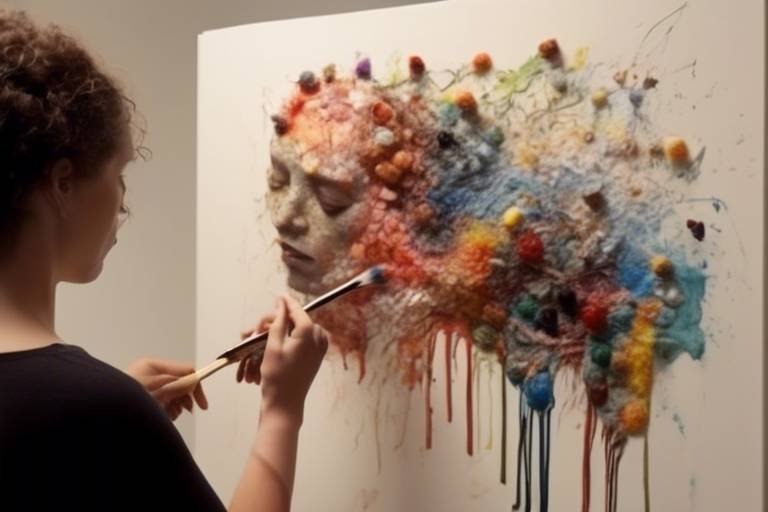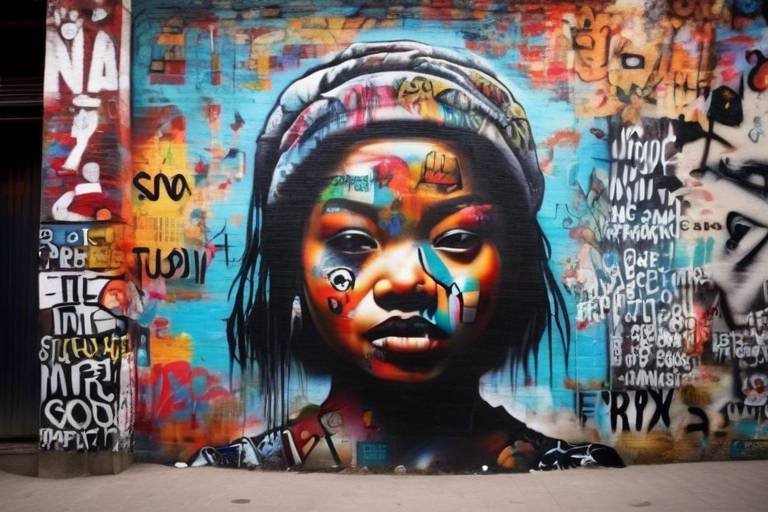The Aesthetic Traditions of Tibetan Thangka Art
The Aesthetic Traditions of Tibetan Thangka Art delve deep into the cultural and artistic legacy of these exquisite paintings. Originating in Tibet, Thangkas are revered for their intricate details, vibrant colors, and profound spiritual themes that have captivated audiences for centuries. Each stroke of the brush carries a story, each color a symbol, creating a visual tapestry of enlightenment and devotion.
These sacred artworks are not merely decorative pieces but windows into a world of symbolism and iconography that transcend mere aesthetics. Rooted in Buddhist teachings and Tibetan symbolism, Thangka art is a visual representation of spiritual truths and philosophical concepts, inviting viewers to contemplate the mysteries of existence.
One of the most fascinating aspects of Tibetan Thangkas is the use of color symbolism. Each hue holds a specific meaning, from the calming blues representing wisdom to the fiery reds symbolizing passion and transformation. The colors dance on the canvas, weaving a narrative that goes beyond the visible, tapping into the realm of emotions and cosmic energies.
Central to Thangka paintings are the iconic deities and enlightened beings that grace the canvas. From the serene countenance of Buddha to the fierce protectors known as Dharmapalas, each figure embodies virtues and qualities that serve as guides for meditation and spiritual practice. These divine beings come to life through the skilled hands of Tibetan artists, carrying a message of peace, compassion, and enlightenment.
The creation of a Thangka painting is a labor of love and devotion, requiring meticulous techniques and sacred materials. Artists prepare the canvas with care, grinding mineral pigments by hand, and applying gold leaf with precision. Every brushstroke is imbued with intention, every detail a reflection of the artist's reverence for the subject matter.
In the modern era, Tibetan Thangka art has experienced a revival, with artists blending traditional techniques with contemporary styles. This fusion of old and new breathes fresh life into a time-honored tradition, ensuring that Thangka art remains relevant in a rapidly changing world. The global appreciation for these artworks continues to grow, transcending cultural boundaries and uniting admirers in a shared reverence for beauty and spirituality.
As we journey through the rich tapestry of Tibetan Thangka art, we are reminded of the timeless wisdom and artistic mastery that have been passed down through generations. Each painting is a testament to the enduring legacy of Tibetan culture, inviting us to contemplate the divine mysteries and spiritual truths that lie at the heart of this ancient tradition.
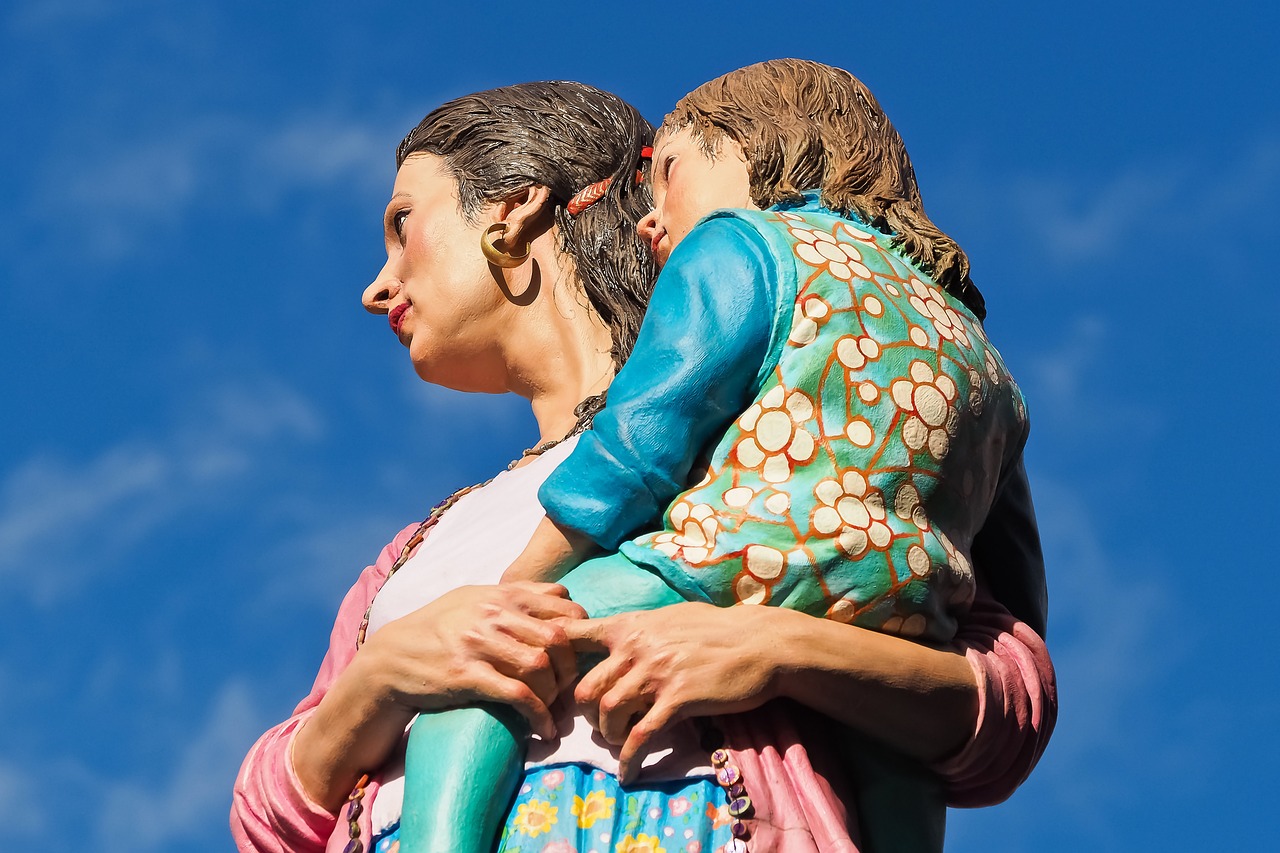
Origins of Thangka Art
The origins of Thangka art can be traced back to ancient Tibet, where the art form emerged as a visual expression of Buddhist teachings and spiritual practices. Influenced by Indian, Nepalese, and Chinese artistic traditions, Tibetan Thangkas evolved into a unique style characterized by intricate details, vibrant colors, and symbolic imagery.
Initially used as aids for meditation and religious instruction, Thangka paintings served as portable devotional objects that could be easily rolled up and transported. The early Thangkas were often painted on cotton or silk canvas, showcasing scenes from the life of Buddha, various deities, and sacred symbols.
As Buddhism spread across Tibet, the demand for Thangka art grew, leading to the establishment of specialized workshops and schools where artists honed their skills under the guidance of master painters. The intricate techniques and spiritual significance of Thangka art were passed down through generations, preserving the rich cultural heritage of Tibetan artistic traditions.

Symbolism and Iconography
When delving into the world of Tibetan Thangka art, one cannot escape the mesmerizing depth of symbolism and iconography that permeates every brushstroke and color choice. These intricate paintings serve as visual expressions of profound spiritual teachings, encapsulating the essence of Tibetan Buddhism and its rich cultural heritage.
Symbolism reigns supreme in Tibetan Thangka art, with each element carefully chosen to convey layers of meaning and significance. From the vibrant hues that symbolize different emotions and virtues to the intricate depictions of deities and mandalas representing cosmic order and spiritual realms, every detail holds a deeper message waiting to be unraveled.
The iconography of Tibetan Thangkas is a language of its own, with each deity and enlightened being embodying specific qualities and attributes for meditation and contemplation. Whether it's the serene countenance of Buddha exuding wisdom and compassion or the fierce appearance of Dharmapalas symbolizing protection and guidance, these iconic figures serve as gateways to deeper spiritual understanding.
Moreover, the intricate patterns, symbols, and geometric designs found in Tibetan Thangka art are not merely decorative but laden with symbolic meanings that transcend mere aesthetics. Every stroke of the brush, every color choice, and every motif carries a spiritual significance that speaks to the interconnectedness of all beings and the cyclical nature of existence.

Color Symbolism in Thangka Art
Color symbolism in Tibetan Thangka art plays a crucial role in conveying deeper meanings and spiritual significance. Each color used in Thangka paintings carries specific symbolism and associations, enriching the visual narrative with layers of metaphorical depth. From the vibrant reds to the serene blues, every hue is carefully chosen to evoke emotions, represent virtues, and symbolize various elements within the cosmic and spiritual realms.
In Tibetan Thangka art, red symbolizes power, passion, and transformation. It is often associated with the fierce deities and wrathful aspects of enlightened beings, representing the energy of fire and the intensity of spiritual practice. The color red in Thangka paintings signifies the overcoming of obstacles and the purification of negative emotions, guiding practitioners towards inner strength and courage.
On the other hand, blue holds a sense of tranquility, wisdom, and purity in Tibetan Thangka art. Blue is commonly linked to peaceful deities, meditative states, and the vast expanse of the sky, symbolizing the boundless nature of consciousness and the clarity of mind. Through the use of blue hues, Thangka artists convey a sense of calmness, spiritual insight, and the infinite potential for enlightenment.
Yellow, another prominent color in Thangka art, represents generosity, knowledge, and the illuminating power of wisdom. It is often associated with the radiant aura of enlightened beings, the golden hue of the sun, and the abundance of spiritual blessings. Yellow in Thangka paintings symbolizes the path of learning, growth, and selfless giving, encouraging practitioners to cultivate virtues and share their inner light with others.
Green, symbolizing harmony, balance, and growth, is a color frequently used in Tibetan Thangka art to represent the healing energy of nature and the nurturing qualities of compassion. Green hues evoke feelings of renewal, vitality, and interconnectedness with all living beings, reflecting the cycle of life and the flourishing of the spiritual journey. Through the color green, Thangka artists convey a sense of renewal, rejuvenation, and the continuous cycle of transformation in the universe.
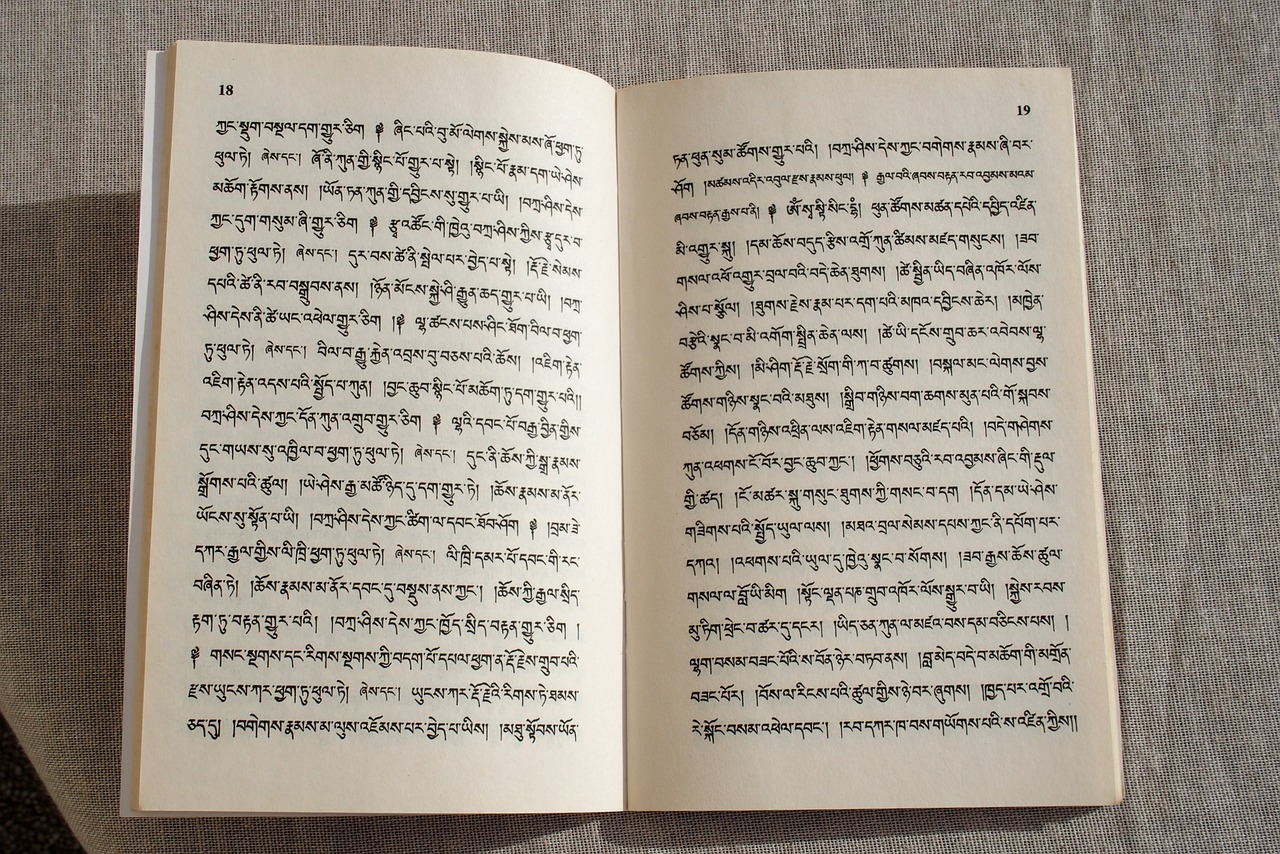
Iconic Deities in Thangka Paintings
Iconic Deities in Thangka Paintings showcase a rich tapestry of spiritual figures revered in Tibetan Buddhism. These revered beings play a significant role in the iconography of Thangka art, each embodying unique qualities and symbolism that hold deep spiritual significance for practitioners and viewers alike. From the serene countenance of Buddha to the compassionate Bodhisattvas and fierce Dharmapalas, these deities serve as focal points for meditation, contemplation, and devotion.
One of the most prominent figures depicted in Thangka paintings is Buddha, the enlightened one who embodies the ultimate state of awakening and compassion. His serene presence and gentle smile symbolize peace, wisdom, and enlightenment, inspiring practitioners on their spiritual journey towards liberation.
Bodhisattvas are another essential category of deities in Thangka art, representing beings who have attained enlightenment but choose to remain in the world to help others achieve spiritual awakening. These compassionate figures, such as Avalokiteshvara and Manjushri, embody qualities like compassion, wisdom, and skillful means, guiding practitioners on the path of altruism and enlightenment.
Dharmapalas are fierce protectors of the Buddhist teachings, depicted with wrathful expressions and wielding symbolic weapons to subdue negative forces. These deities, such as Mahakala and Palden Lhamo, serve to guard practitioners from obstacles on their spiritual journey and inspire courage and determination in facing challenges.
Each deity in Thangka art is intricately detailed, with symbolic attributes and gestures that convey their unique qualities and roles in the Buddhist pantheon. The vibrant colors, intricate patterns, and meticulous details in these paintings serve not only as artistic expressions but also as visual aids for meditation and contemplation, inviting viewers to delve deeper into the profound teachings and spiritual realms represented by these iconic deities.
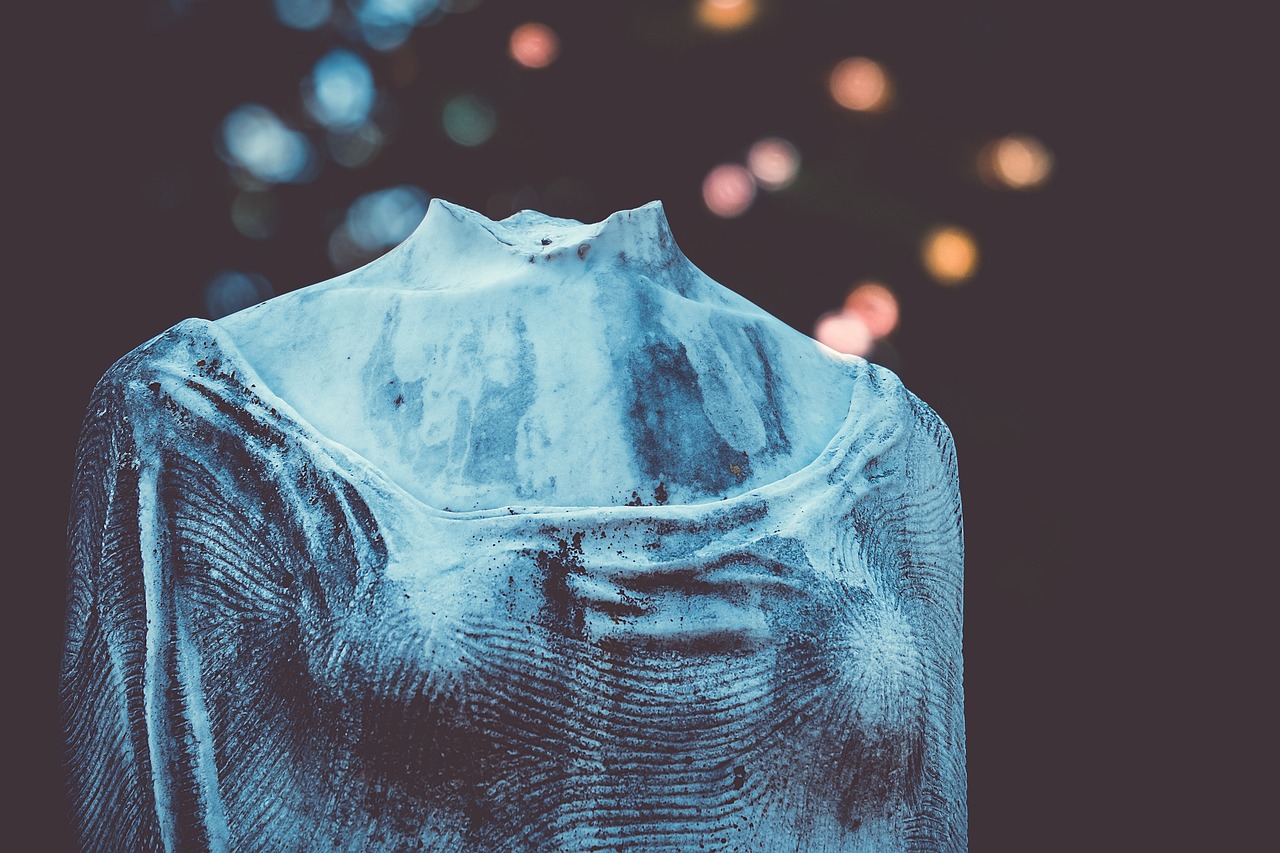
Techniques and Materials
When it comes to Tibetan Thangka art, the techniques and materials used play a crucial role in creating these exquisite masterpieces. The process involves a meticulous approach that has been passed down through generations, combining skillful craftsmanship with spiritual devotion.
One of the key aspects of Thangka painting is the preparation of the canvas. Traditionally, artists use cotton or silk fabric that is treated with a special mixture of glue and chalk to create a smooth and durable surface for painting. This process ensures that the colors adhere well and the artwork remains vibrant for centuries to come.
The use of mineral pigments is another defining feature of Tibetan Thangka art. These natural pigments are sourced from minerals, plants, and even precious stones, each color carefully chosen for its symbolic significance. The intricate process of grinding and mixing these pigments requires precision and expertise to achieve the desired hues and tones.
Gold leaf application is a distinctive technique used to add a touch of opulence and sacredness to Thangka paintings. The delicate process of applying thin sheets of gold onto the artwork requires a steady hand and a deep reverence for the spiritual essence that gold represents in Tibetan culture.
Brushwork in Thangka art is highly detailed and precise, reflecting the artist's skill and dedication to capturing even the smallest elements with precision. The use of fine brushes made from natural materials allows for intricate patterns, fine lines, and subtle shading, enhancing the overall beauty of the artwork.
Overall, the techniques and materials used in Tibetan Thangka art are not just tools for creating visual masterpieces but are integral components that embody the spiritual essence and cultural heritage of this ancient art form.
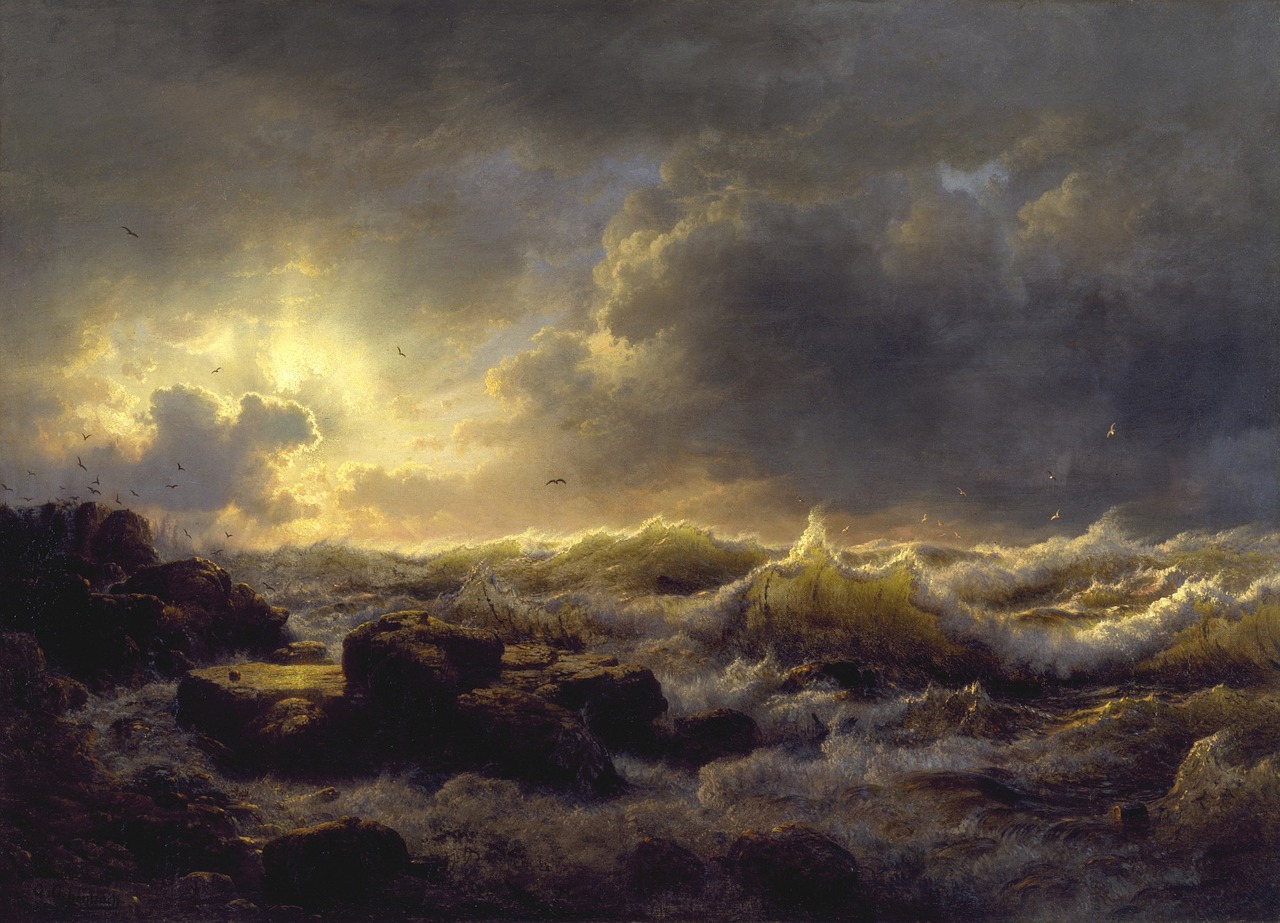
Thangka Painting Process
The is a sacred and meticulous art form that requires skill, patience, and devotion. Each step in creating a Thangka painting is imbued with spiritual significance and traditional techniques that have been passed down through generations of Tibetan artists.
First and foremost, the process begins with the selection of the canvas, typically made of cotton or silk, which is then treated with a special mixture of glue and chalk to create a smooth surface for painting. This preparation ensures the longevity and quality of the artwork.
Next, the artist sketches the intricate design on the canvas using precise measurements and proportions, often following traditional templates and guidelines to maintain authenticity in the depiction of deities, mandalas, and symbols.
Once the sketch is complete, the artist begins the painstaking task of applying layers of mineral pigments, carefully mixing colors to achieve the desired shades and tones. Each color in a Thangka painting holds symbolic meaning, representing various aspects of the Buddhist cosmology and spiritual teachings.
After the colors are applied, the artist outlines the figures and motifs with fine gold lines, symbolizing the divine and illuminating the sacred imagery. The use of gold leaf adds a radiant quality to the artwork, enhancing its spiritual essence and reflecting light in a mesmerizing way.
Finally, the completed Thangka painting is consecrated through prayers and rituals, infusing it with blessings and positive energy. This final step is essential in activating the spiritual power of the artwork and connecting it to the divine realms.

Contemporary Revival and Innovation
Contemporary Revival and Innovation in Tibetan Thangka art showcase a dynamic fusion of tradition and modernity, breathing new life into this ancient art form. As artists seek to bridge the gap between the past and the present, they experiment with innovative techniques and styles while staying true to the essence of Thangka painting. By incorporating contemporary themes, colors, and compositions, they attract a younger audience and engage with a global art community.
One notable trend in the contemporary revival of Tibetan Thangka art is the use of digital tools and technology to enhance the creative process. Artists now leverage digital software for sketching, color manipulation, and design experimentation, revolutionizing the way Thangka paintings are conceptualized and produced. This marriage of tradition and innovation opens up new possibilities for artistic expression and cultural exchange.
Moreover, the reinterpretation of traditional motifs and narratives in a modern context adds layers of depth and complexity to Tibetan Thangka art. Artists infuse personal experiences, social commentary, and environmental concerns into their works, sparking conversations about identity, spirituality, and the human condition. This evolution not only preserves the heritage of Thangka painting but also propels it into the contemporary art scene with relevance and resonance.
Collaborations between Tibetan artists and international creatives further fuel the innovation and global appeal of Thangka art. Through cross-cultural exchanges and artistic dialogues, diverse perspectives converge to create eclectic masterpieces that transcend boundaries and captivate audiences worldwide. This cross-pollination of ideas and techniques enriches the artistic landscape, fostering a vibrant ecosystem where tradition thrives alongside experimentation.
In conclusion, the contemporary revival and innovation in Tibetan Thangka art herald a renaissance of creativity and cultural exchange, ensuring that this ancient tradition continues to evolve and inspire generations to come.
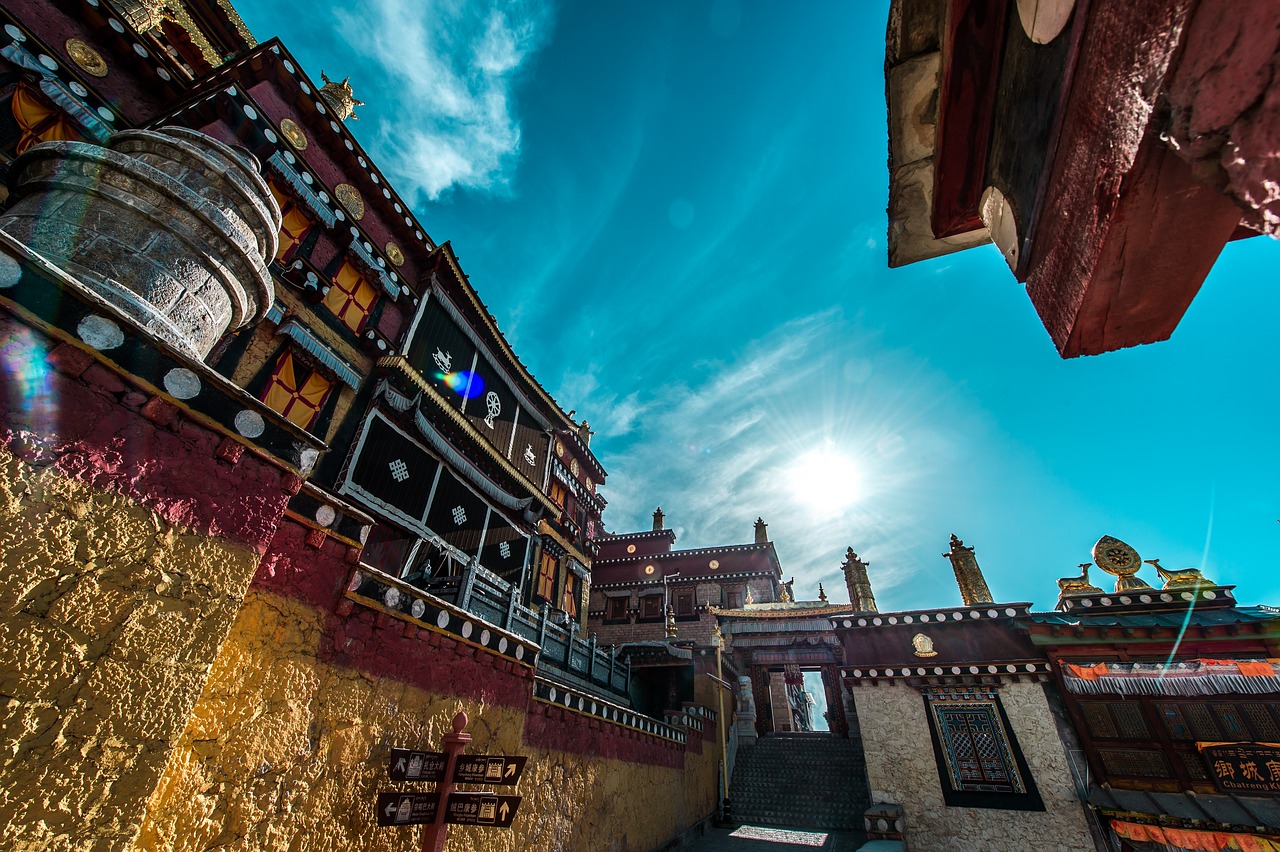
Global Influence and Appreciation
Global Influence and Appreciation of Tibetan Thangka art has transcended traditional boundaries, captivating audiences worldwide with its spiritual depth and artistic excellence. The intricate details and vibrant colors of Thangka paintings have found admirers in collectors, scholars, and art enthusiasts beyond the Tibetan community, sparking a global renaissance of interest in this ancient art form.
One of the key factors contributing to the global appeal of Tibetan Thangka art is its profound spiritual essence, which resonates with individuals seeking deeper meaning and connection in today's fast-paced world. The symbolic richness and intricate iconography of Thangka paintings offer viewers a visual gateway to explore Buddhist philosophy, meditation practices, and the path to enlightenment.
Moreover, the meticulous craftsmanship and sacred techniques employed in creating Thangka art have garnered admiration for the skill and dedication of Tibetan artists. The use of traditional materials such as mineral pigments, gold leaf, and handcrafted brushes adds a layer of authenticity and reverence to each artwork, further enhancing its appeal to a global audience.
As awareness of Tibetan Thangka art spreads across continents, exhibitions, workshops, and academic studies have contributed to a deeper understanding and appreciation of this cultural treasure. Art galleries and museums around the world now showcase Thangka paintings, allowing viewers to experience the beauty and spiritual potency of these masterpieces firsthand.
Through cultural exchanges and collaborations, Tibetan Thangka artists have been able to share their heritage and techniques with international audiences, fostering a sense of cross-cultural dialogue and mutual respect. This exchange of artistic traditions not only enriches the global art scene but also serves as a bridge between different cultures, promoting harmony and unity through creativity and shared appreciation.
Frequently Asked Questions
- What is the significance of Thangka art in Tibetan culture?
Thangka art holds immense cultural and spiritual significance in Tibetan culture. It serves as a visual representation of Buddhist teachings, offering a way for practitioners to meditate on the divine and connect with the spiritual realm.
- How are the colors in Thangka paintings chosen and what do they symbolize?
The colors in Thangka paintings are carefully selected based on their symbolic meanings. Each color represents different aspects such as emotions, virtues, elements, and celestial realms. For example, white symbolizes purity, while blue represents wisdom and compassion.
- What materials are traditionally used in creating Tibetan Thangka art?
Traditional Tibetan Thangka art involves the use of sacred materials such as canvas, mineral pigments, gold leaf, and special brushes. These materials are chosen for their symbolic significance and connection to the spiritual practices associated with Thangka painting.
- How has contemporary art influenced the practice of Tibetan Thangka painting?
Contemporary art has brought new perspectives and innovations to Tibetan Thangka painting. Artists today blend traditional techniques with modern styles and themes, keeping the ancient art form relevant and appealing to a wider audience beyond traditional Tibetan communities.





